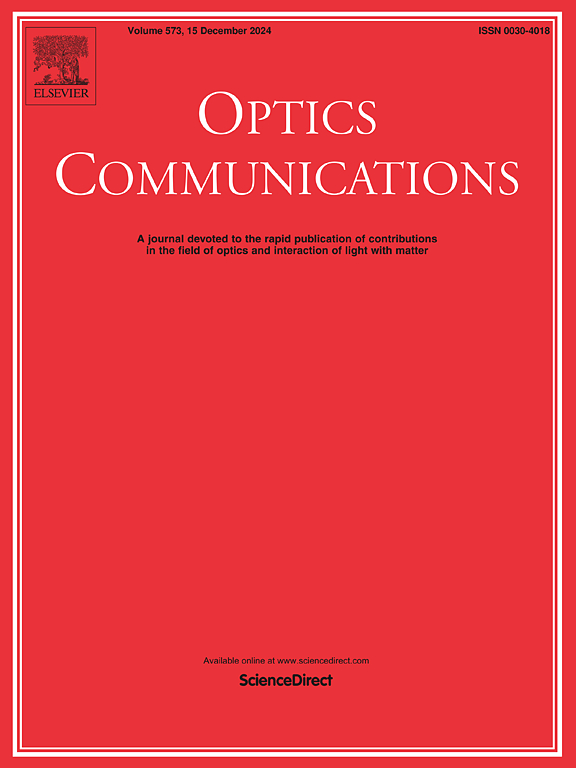A self-adaptive visible light indoor positioning system based on BLS network incorporating self-attention mechanism
IF 2.5
3区 物理与天体物理
Q2 OPTICS
引用次数: 0
Abstract
To address the challenges of degraded positioning accuracy and insufficient robustness caused by dynamic pose disturbances of the photodiode (PD) in visible light indoor positioning systems, this paper proposes a self-adaptive visible light indoor positioning system based on broad learning system (BLS) incorporating self-attention mechanism, referred to as SA-BLS. First, a visible light propagation model incorporating the 3D pose of the PD is established, and a multi-pose domain received signal strength (RSS) -pose multidimensional feature fingerprint database is constructed. Subsequently, a self-attention-BLS collaborative architecture is designed: the self-attention mechanism dynamically allocates weights to RSS and pose features, mitigating the RSS distribution shift caused by PD tilt, and achieves position estimation based on feature mapping matrices and pseudo-inverse analysis. Experimental results show that in a 4.5 m × 3.6 m × 3 m indoor environment, the traditional BLS model achieves average positioning errors of 5.49 cm and 19.97 cm under PD horizontal placement and tilt angles [0°, 30°], respectively. In contrast, the SA-BLS system maintains a stable average positioning error of 3.56 cm even when the PD is tilted within [0°, 30°]. These results validate the significant advantages of the proposed system in improving positioning accuracy and adaptability, demonstrating strong potential for practical applications.
基于BLS网络的自适应可见光室内定位系统
针对可见光室内定位系统中光电二极管(PD)动态位姿扰动导致定位精度下降和鲁棒性不足的问题,提出了一种基于自注意机制的广义学习系统(BLS)的自适应可见光室内定位系统,简称SA-BLS。首先,建立了包含PD三维位姿的可见光传播模型,构建了多位姿域接收信号强度-位姿多维特征指纹数据库;随后,设计了自注意- bls协同架构:自注意机制动态分配RSS和位姿特征权重,减轻了PD倾斜引起的RSS分布偏移,实现了基于特征映射矩阵和伪逆分析的位置估计。实验结果表明,在4.5 m × 3.6 m × 3 m的室内环境中,传统BLS模型在PD水平放置和倾斜角度[0°,30°]下的平均定位误差分别为5.49 cm和19.97 cm。相比之下,SA-BLS系统即使PD倾斜在[0°,30°]范围内,也能保持3.56 cm的稳定平均定位误差。这些结果验证了该系统在提高定位精度和适应性方面的显著优势,显示出强大的实际应用潜力。
本文章由计算机程序翻译,如有差异,请以英文原文为准。
求助全文
约1分钟内获得全文
求助全文
来源期刊

Optics Communications
物理-光学
CiteScore
5.10
自引率
8.30%
发文量
681
审稿时长
38 days
期刊介绍:
Optics Communications invites original and timely contributions containing new results in various fields of optics and photonics. The journal considers theoretical and experimental research in areas ranging from the fundamental properties of light to technological applications. Topics covered include classical and quantum optics, optical physics and light-matter interactions, lasers, imaging, guided-wave optics and optical information processing. Manuscripts should offer clear evidence of novelty and significance. Papers concentrating on mathematical and computational issues, with limited connection to optics, are not suitable for publication in the Journal. Similarly, small technical advances, or papers concerned only with engineering applications or issues of materials science fall outside the journal scope.
 求助内容:
求助内容: 应助结果提醒方式:
应助结果提醒方式:


